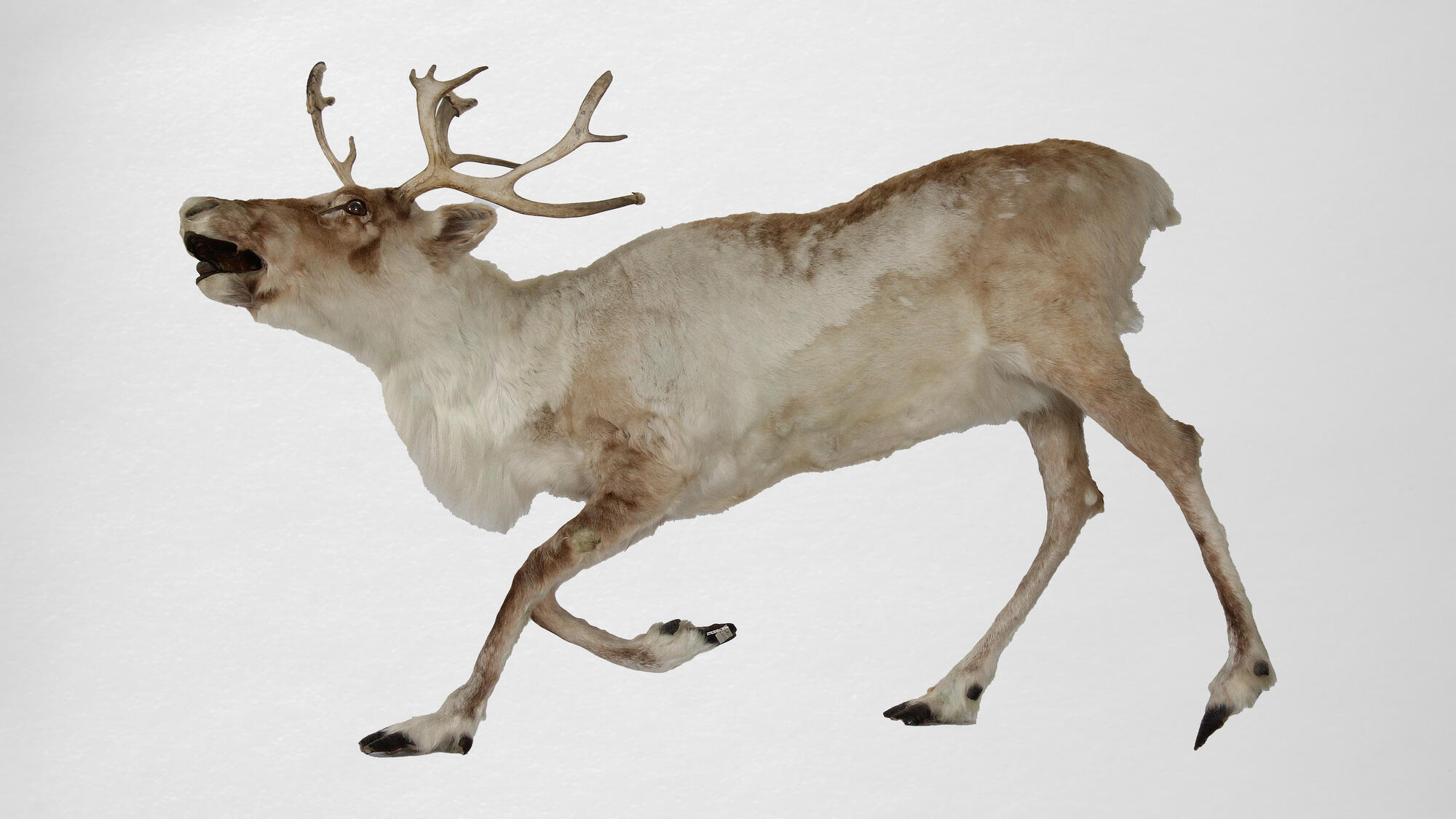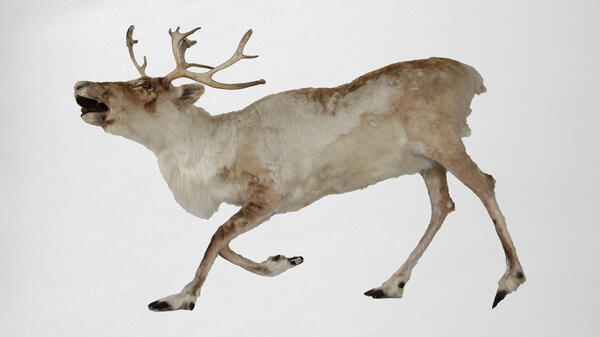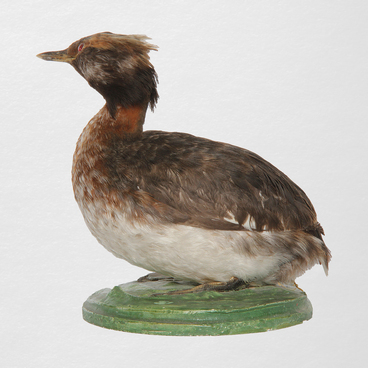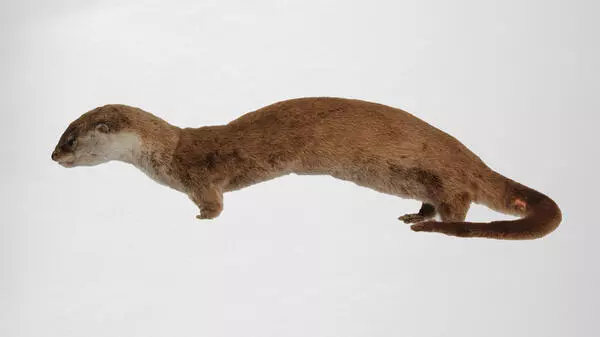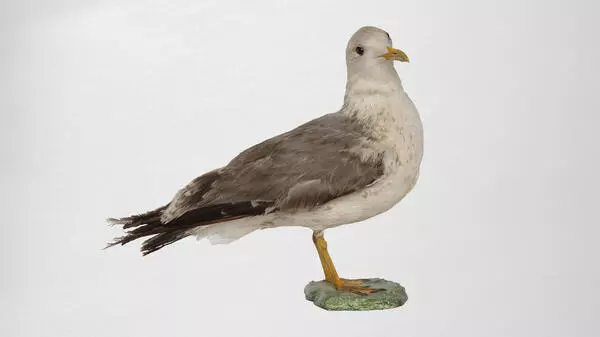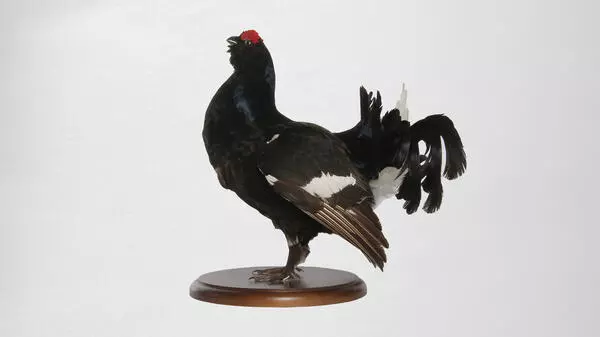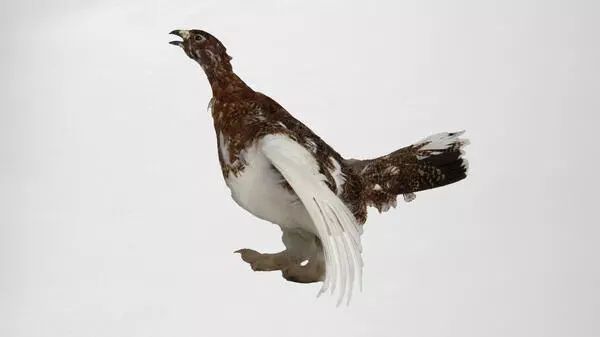Reindeer is the backbone of the economy of almost all northern peoples of the planet. This animal provides people with food: meat and milk, skins and fur for clothing and dwellings. Also, with the help of deer, you can move from place to place over long distances at any time of the year.
Wild reindeer — both forest and arctic ones — are much larger than domesticated ones. Nowadays, they are included in the Red Book of the Yamalo-Nenets Autonomous District, since the species is recognized as vulnerable and requires population restoration.
The reindeer has an elongated body and a long massive neck, its legs are short and powerful. It looks shorter and less slender than other members of the Deer family.
The body length of the reindeer varies: in males — from 184 to 226 centimeters, in females — from 166 to 199. At the withers, an adult deer grows from 114 to 141 centimeters. Body weight reaches 74–194 kilograms in males and up to 123 kilograms in females. The richer the lands on which the population feeds, the larger the individuals.
To feed themselves, reindeer roam the tundra every year. In winter, they shovel snow with their hooves and get lichen, or reindeer moss. In addition to lichens, they feed on dozens of species of herbaceous plants, foliage and young branches of shrubs, fallen leaves and other rotten plants and twigs, they like mushrooms.
Both males and females have horns. Annually, at the very beginning of winter, males shed their horns and grow new ones only by the next fall. Females lose their horns later in the spring. Therefore, in a hungry winter time, the reindeer is arranged so that females and young animals have horns, but males do not. This helps the females with the calves to protect the reindeer moss dug out from under the snow from strong but hornless males and not to starve.
The animal’s wide hooves help it not fall into the snow. Reindeer have the lowest ground pressure of all ungulates — 140 grams per square centimeter. For example, for a cow, this value is 600. Since the reindeer does not trample pastures, it is considered the most harmless ungulate for vegetation.
Reindeer is the ungulate most adapted to cold weather. In this it is helped by the strands of wool of an unusual type: they are long, wedge-shaped and taper towards the base. The strands of wool are filled with air, which does not release heat. Thanks to this air gap, the deer also easily floats on the water and swims well. Even his nose and the inner surface of the auricles are covered with hair.
The reindeer has a so-called ringing sound. When a herd of deer moves, a clicking is heard all the time: the tendons rub against the bone to which they are adjacent. The ringing helps the reindeer hear each other, stay close and keep warm together.
Wild reindeer — both forest and arctic ones — are much larger than domesticated ones. Nowadays, they are included in the Red Book of the Yamalo-Nenets Autonomous District, since the species is recognized as vulnerable and requires population restoration.
The reindeer has an elongated body and a long massive neck, its legs are short and powerful. It looks shorter and less slender than other members of the Deer family.
The body length of the reindeer varies: in males — from 184 to 226 centimeters, in females — from 166 to 199. At the withers, an adult deer grows from 114 to 141 centimeters. Body weight reaches 74–194 kilograms in males and up to 123 kilograms in females. The richer the lands on which the population feeds, the larger the individuals.
To feed themselves, reindeer roam the tundra every year. In winter, they shovel snow with their hooves and get lichen, or reindeer moss. In addition to lichens, they feed on dozens of species of herbaceous plants, foliage and young branches of shrubs, fallen leaves and other rotten plants and twigs, they like mushrooms.
Both males and females have horns. Annually, at the very beginning of winter, males shed their horns and grow new ones only by the next fall. Females lose their horns later in the spring. Therefore, in a hungry winter time, the reindeer is arranged so that females and young animals have horns, but males do not. This helps the females with the calves to protect the reindeer moss dug out from under the snow from strong but hornless males and not to starve.
The animal’s wide hooves help it not fall into the snow. Reindeer have the lowest ground pressure of all ungulates — 140 grams per square centimeter. For example, for a cow, this value is 600. Since the reindeer does not trample pastures, it is considered the most harmless ungulate for vegetation.
Reindeer is the ungulate most adapted to cold weather. In this it is helped by the strands of wool of an unusual type: they are long, wedge-shaped and taper towards the base. The strands of wool are filled with air, which does not release heat. Thanks to this air gap, the deer also easily floats on the water and swims well. Even his nose and the inner surface of the auricles are covered with hair.
The reindeer has a so-called ringing sound. When a herd of deer moves, a clicking is heard all the time: the tendons rub against the bone to which they are adjacent. The ringing helps the reindeer hear each other, stay close and keep warm together.
